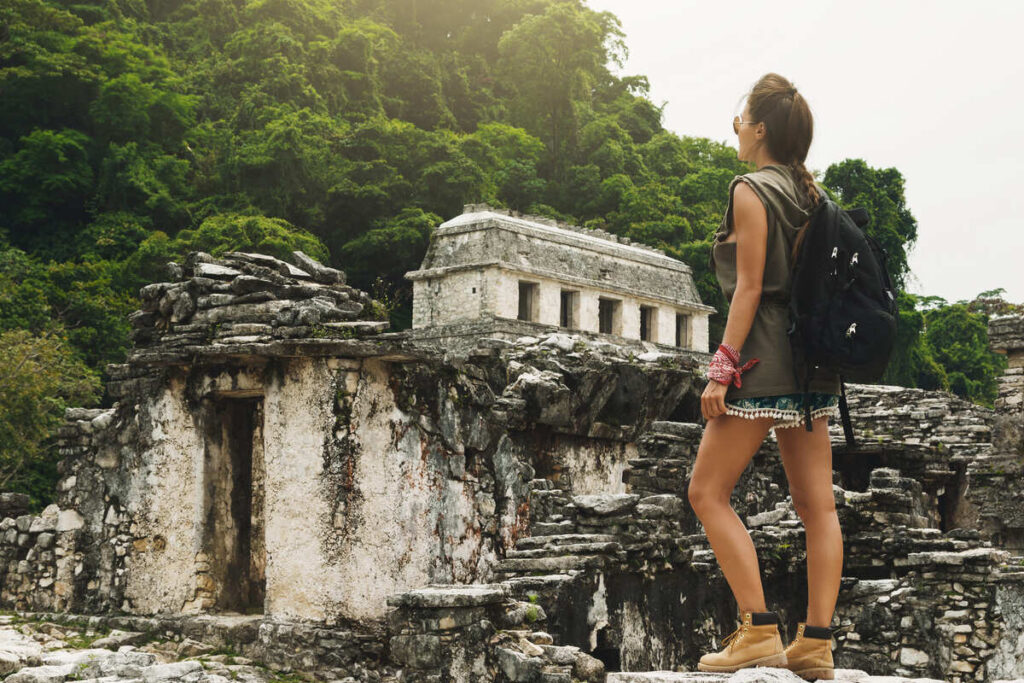No products in the cart.
Travel Guide
These Are The 5 Amazing Mayan Ruins You Can Visit From Cancun By Train This Winter
Last Updated
In case you weren’t aware of this already, a new scenic train will be launching from Cancun in time for winter, linking the bustling Caribbean city to other tourist hotspots in the wider Yucatan Peninsula that were previously inaccessible by public transport.
Other than enjoying easier connections to smaller resort towns, such as Playa Del Carmen and Puerto Morelos, and even off-path gems like Chetumal and Bacalar, visitors will be able to visit some of the most impressive Mayan ruins in Mexico with minimal hassle.

Starting December 1, basing yourself in Cancun, you will have access to these 5 ancient archaeological sites:
Chichen Itza
The number one tourist attraction in all of Mexico, Chichen Itza will have its very own Maya Train station, helping visitors staying in Cancun or any other coastal spot in the Mayan Riviera get there without paying hefty prices for private guided tours.
Best known for its landmark El Castillo, a step pyramid that’s a symbol of Mexico, Chichen Itza was once one of the most affluent cities of the pre-Columbian period, with architectural feats that reflect Itza’s multiculturalism, as it was home to numerous ethnic groups within the Mayan branch.

Exploring the archaeological site, you will find well-preserved temples, such as the Templo de los Guerreros, the Great Ball Court, where the Mayans practiced their famous ballgame, and the Tzompantli, the eerily-titled Skull Platform.
Chichen Viejo
On the same Maya Train stop, a short six-minute walk from the main archeological complex of Chichen Itza, lies a group of lesser-known ruins that, up until this year, had not been open for visitation: the equally fascinating Chichen Viejo.
Though they form part of the same Mayan settlement, both Itza and Viejo are treated as different attractions as the latter effectively served as a residential area for the elites at the time, offering an insight into the lives of affluent Mayans and their customs.

Around the North Plaza, tourists can now see up close the exposed remains of five cremated human bodies linked to the noble Cupul family, civic buildings dating back to 878 AD, and many more mind-blowing structures they previously were not allowed to access.
Izamal
The next stop on the Maya Train after Chichen Itza, Izamal is a small Yucatanese town that’s attained Instagram fame for its vibrant yellow townscape. Beneath its charming cobbled streets and colonial aesthetic, however, lies an often-forgotten past that is just as rich.
Before it was seized by the Spaniards, Izamal was an important Mayan city where the third (or fourth, depending on sources) largest pyramid in Mesoamerica was built. Today, this very same pyramid is the most striking Mayan monument in Izamal.

Sadly, a majority of the pre-Columbian buildings are now ruins, scattered around Old Town Izamal, but it’s precisely this contrast between far more ancient, indigenous heritage and the territory that was lost or ‘conquered’ by the Spanish.
Nuevo Xcan
The closest one to Cancun, only a single stop away on the Cancun-Izamal line, Nuevo Xcan is a different type of Mayan heritage site, as it is neither a necropolis nor a vast uninhabited city slowly being reclaimed by nature: it is a natural site.
A protected reserve, Nuevo Xcan encompasses a series of flooded underground chambers, or cenotes, that the Mayans perceived as sacred. Back then, sacrificial offerings were held in the turquoise-colored waters, as well as major ceremonies.

After all, the ancient civilization reportedly believed that cenotes were the gateway to the Underworld. As scary as that may sound, the caves now only host tourists hoping to go for a dip at the end of an arduous trail, as well as History enthusiasts keen on deciphering the Mayan mindset.
Tulum
Though it is most commonly associated with luxurious resorts and wild jungle raves, Tulum can also make for an incredible cultural destination, especially for those interested in the Mayan World, as it comprises a walled city established as early as the 6th century AD.
The archaeological complex in Tulum is distinguished for its near-perfect state of preservation, as it is one of the last cities to have been built by the Mayans ahead of the arrival of European settlers, and it was abandoned much later.

A postcard view, the Castillo sits atop a cliff overlooking the bright-blue Caribbean Sea is an iconic scene of the Mexican Caribbean, and even prior to the launch of the Maya Train, it attracted millions of tourists every month.
Learn more about the Maya Train, including how much tickets will cost here.
Read More:
Top 5 Travel Insurance Plans For 2023 Starting At $10 Per Week
How To Easily Earn Points For Free Travel
↓ Join Our Community ↓
The Travel Off Path Community FB group has all the latest reopening news, conversations, and Q&A’s happening daily!

SUBSCRIBE TO OUR LATEST POSTS
Enter your email address to subscribe to Travel Off Path’s latest breaking travel news, straight to your inbox.
This article originally appeared on TravelOffPath.com
Source link

